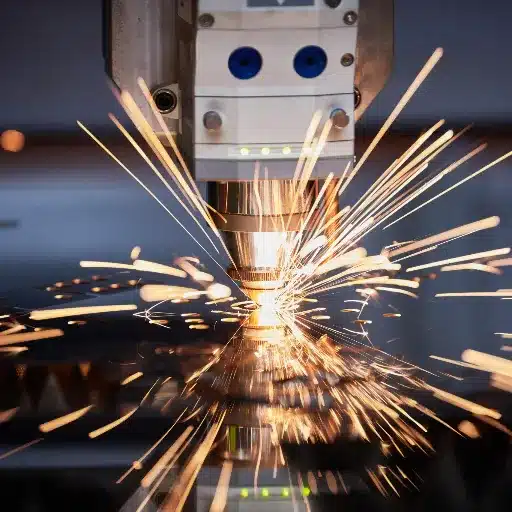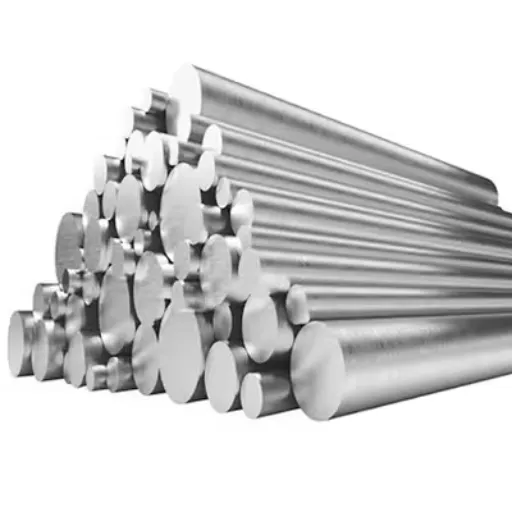Usually, when it comes to enhancing the aesthetics of a surface and sharpening its protection, coating it in powder or paint seems to be the most reliable option. However, which of the two lasts longer? In the case of refurbishing furniture, personalizing car pieces, or even using them for industrial works, knowing the effectiveness and longevity of all options is highly important. This post will compare paint and powder coating, evaluating durability, ecological effects, and cost efficiency. Ultimately, you will surely understand better which solution is ideal for your requirements.
What is Powder Coating and How Does it Work?
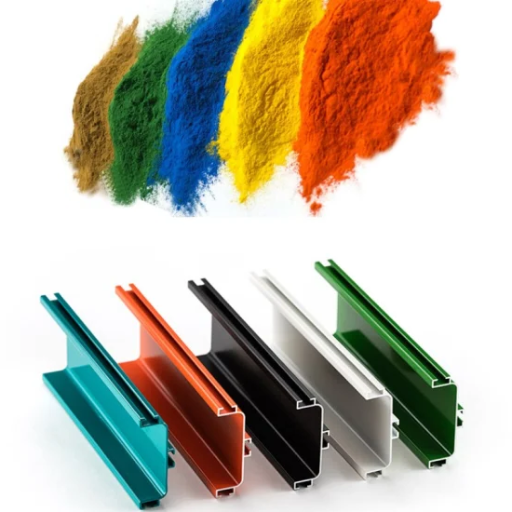
The finishing technique in question begins with applying a dry powder to the surface of an object. Once the object is electrostatically charged, the powder is cured with heat, forming a smooth yet durable coating. Moreover, the powder comprises resin particles and pigments, which are finely ground. After application, the substance is heated to achieve proper adhesion to the surface and better results. For this process’s result, metals seem plated with superb protection that wards off scratches, fading, and chipping. Powder coating is also a green alternative, requiring minimal solvents and dangerous chemicals.
Understanding the Coating Process in Detail
Coating must be high-quality and durable and undergo several steps. First and foremost, Surface Preparation Must be done by all means to get rid of All Contaminants like Dirt, Grease, and Rust So that a coating can be effectively applied. These Steps Include Sandblasting, Chemical Cleaning, and other Mechanical Methods To Improve The Surface Texture, Remove Rust and Dirt, and enhance The Bond Between The Coating and The Material.
Integration has been observed to be a matter of achieving increased efficiency compared to other paints, for example, using up to 95 percent powder coating. After all cleaning processes have occurred, the coating is applied to all surfaces, followed by correctly placing the item in the curing ovens or spray guns. The item is placed in curing ovens where its temperatures range between 300 degrees Fahrenheit and 400 degrees Fahrenheit, which is when the powder is set, then to form a uniformly even, strong coating for 10 – 30 minutes of curing.
The toughness and long life span of the coated materials greatly enhance the advantages of this process. Research states that powder-coated products, with regular care and use, can last 15 to 20 years, alongside good resistance against UV rays, chemicals, and abrasion. All these factors save money for large industries in the long run. Moreover, powder coating does not harm the environment. According to the US EPA, powder coatings release almost zero volatile organic compounds (VOCs), making them far better than liquid coatings for the workers and the environment.
Using the latest technology and being environmentally aware allows the coating process to continuously evolve, allowing for the development of new, safer, and more effective techniques for different industrial and consumer needs.
The Role of Electrostatic Application
Electrostatic application is a critical process in modern powder coating technology. It involves devices and has increased its effectiveness and efficiency. Electrostatic application attracts powder to a surface, using an electric charge to form a coating that is both consistent and sturdy. Its superiority to other technologies, such as value-added technologies, is explained below in more detail.
- Enhanced Transfer Efficiency
Electrostatic Powex can ensure the transfer of powder with over 95 percent efficiency. This results in less material wastage and overall cost.
- Reduced Overspray Waste
Electrostatically charged particles are accurately bound to substrate surfaces, preventing overspray from being lost during the application.
- Improved Coating Uniformity
Guarantees a smooth surface with no holes, strong adhesion, and lasting coating.
- Supports Complex Shapes
Due to the use of electrostatic forces, the powder can reach intricate and most difficult-to-access places, enabling the coating of intricate designs to be done easily.
- Saves on Energy and Cost
Absorbents, solvents, curing time, lower energy usage, and operational costs.
That means this particular coating method increases the use of electrostatic application, advances operational efficiency, and improves coating reliability and efficiency for sustainability. Environmental responsibility is pointed out across the innovation that using this technique promotes.
What Happens During the Curing Process?
While curing, I monitor how the coating shifts from a liquid or powder into a solid form while simultaneously becoming scratch-resistant. This is done by applying heat or ultraviolet light, which causes chemical changes to occur, like polymerization and cross-linking. This ensures that the coating bonds well and is protected over an extensive period of time.
What is the Difference Between Powder Coating and Traditional Paint?
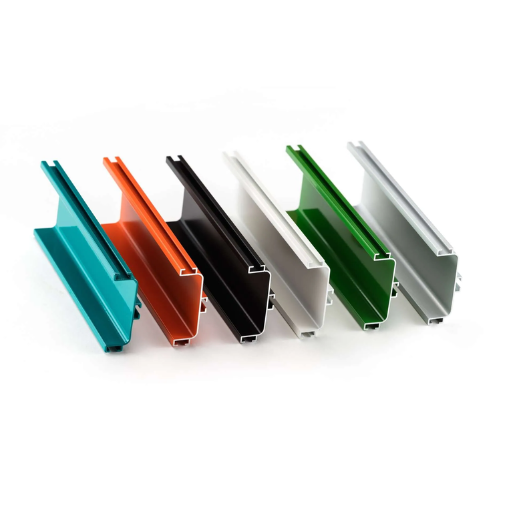
| Parameter | Powder Coating | Traditional Paint |
|---|---|---|
| Application Process | Electrostatic powder, heat-cured | Liquid paint, air-dried |
| Durability | Highly durable, resists chipping/scratching | Less durable, prone to wear |
| Thickness | Thicker, 2-8 millimeters | Thinner, 0.5-1.5 millimeters |
| Finish Consistency | Smooth, even, no drips | May drip, uneven in spots |
| Color Options | Limited, hard to mix | Wide range, easy to customize |
| Environmental Impact | Eco-friendly, no VOCs | Contains VOCs, less eco-friendly |
| Surface Suitability | Best for metals, not heat-sensitive items | Works on various surfaces, including wood |
| Initial Cost | High equipment cost | Lower setup cost |
| Efficiency | Minimal waste, reusable powder | High waste, overspray common |
| Drying Time | Quick curing in 20 minutes | Longer drying time |
Comparing Durability and Longevity
The powder coating’s unique application and chemical composition make it far more durable than traditional paint. Curing in powder coating gives a tough, scratch-resistant finish that can endure hostile environments. Studies suggest that surfaces coated with powder can last up to 15-20 years with minimal upkeep, although exposure to UV light, moisture, and other external factors can shorten this duration. Traditional paints, mainly water-based and oil-based ones, are also less durable. They tend to crumble requiring additional upkeep every 5 to 10 years, which means they must be replaced or repaired multiple times.
Regarding corrosion and chemical exposure, powder coating is less prone to damage. For instance, metal coated with powder and painted is more likely to retain its structural integrity when placed in industrial and outdoor settings than its counterparts. In addition, other forms of painting tend to deteriorate when faced in these corrosive environments. Laboratory tests have proven that powder coating can withstand salt spray tests for over a thousand hours, which is a standard benchmark for measuring durability against corrosion. Many other brands of paint are unable to resist these tests.
Furthermore, powder coating sticks to surfaces better, giving it a thicker and more even coat than paint, which is often uneven. This bonding makes powder coating better for the environment and more durable because it releases fewer VOCs, making it long-lasting and eco-friendly. Powder coating is the clear choice.
Environmental Impact: Volatile Organic Compounds vs. Dry Powder
| Parameter | Volatile Organic Compounds (VOCs) | Dry Powder |
|---|---|---|
| Emission Type | Gaseous emissions | Solid particles |
| Air Pollution | Contributes to ozone and smog formation | Minimal air pollution |
| Toxicity | Can be toxic and carcinogenic | Non-toxic in most cases |
| Health Impact | Causes respiratory and neurological issues | Low health risks |
| Environmental Persistence | Long-lasting in air and water | Minimal environmental persistence |
| Regulatory Concerns | Strict regulations due to health risks | Fewer regulations |
| Eco-Friendliness | Harmful to ecosystems | Eco-friendly alternative |
| Waste Management | Requires careful disposal | Easily recyclable |
| Usage Examples | Found in paints, solvents, fuels | Used in coatings, powders |
Surface Texture and Aesthetics
Unlike traditional liquid paint, powder coating is smooth and more aesthetically appealing, giving it a wider variety of uses and meeting more functional and design needs.
How Does Powder-Coated Steel Compare to Other Metals?
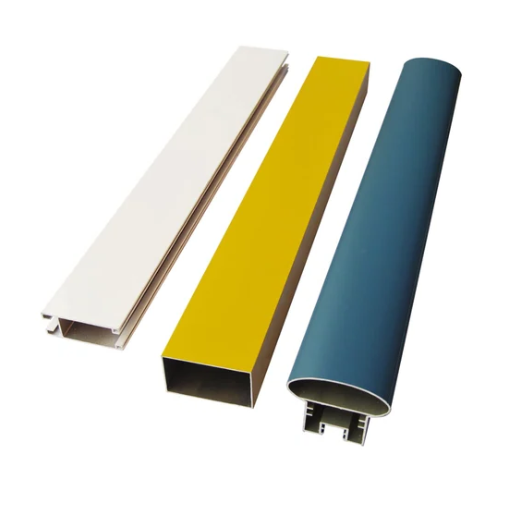
Due to its strength, resistance to corrosion, and versatile appeal, powder-coated steel outshines other metals. It is well suited for harsh environments because it does not corrode, chip, or fade like untreated steel or painted metals. In addition, it requires less maintenance because of its rigid, scratch-resistant surface. Moreover, powder coating guarantees a consistent surface with an unprecedented variety of colors and textures. These qualities make it a cost-effective and eco-friendly choice for virtually any application. Easily dominating other metals, steel powder coating outshines other materials.
Corrosion-Resistant Properties
Powder-coated steel is a supreme selection for needed areas because of its corrosion-resistant properties. These benefits come from:
- Barrier Protection
It prevents moisture and oxygen, which quickly leads to corrosion. It is a strong barrier that protects the steel surface from these elements.
- Chemical Resistance
Untreated steel succumbs to chemicals, acids, salts, and alkalis, damaging the surface and leading to corrosion and rapid most. Powder-coated surfaces can withstand this corrosion, allowing them to last a lifetime.
- Weatherproof Coating
UV rays, extreme rain, and subzero temperatures are harsh on steel structures, degrading their condition. Steel that is powder-coated can withstand this abuse.
- Rust Overcoat
Powder coat seals the surface thoroughly to prevent water, air, and rust from damaging the steel. This reduces the amount of rust and corrosion over time.
- Scratch and Chip Resistance
Nonuniform surfaces rapidly lead to localized corrosion sites. This is advantageous due to a durable finish that helps reduce scratches and chips that expose the steel, which leads to bare steel.
Various residential, commercial, and industrial applications will benefit from a reliable and resilient structure, the durability of which comes from powder-coated steel.
Steel vs Aluminum and Other Alloys
| Parameter | Steel | Aluminum | Other Alloys |
|---|---|---|---|
| Weight | Heavy | Lightweight | Varies by composition |
| Strength | High tensile strength | High strength-to-weight ratio | Depends on alloy type |
| Corrosion Resistance | Low (unless stainless) | High | Varies (e.g., titanium is excellent) |
| Malleability | Moderate | High | Varies |
| Thermal Conductivity | Low | High | Varies |
| Cost | Generally cheaper | More expensive | Varies |
| Applications | Construction, tools, vehicles | Aerospace, electronics, packaging | Specialized uses (e.g., medical) |
| Machinability | Moderate | High | Varies |
| Weldability | High | Moderate | Varies |
The Impact of Galvanizing and Anodizing Processes
Both galvanizing and anodizing add value to metals through enduring fortification but vary in processes, materials, and use cases.
Galvanizing
Galvanizing is called applying protective zinc coatings to iron or steel to save it from rusting. This is done via hot-dip galvanization, dipping the metal in molten zinc. In most environments, galvanized steel improves corrosion resistance for over fifty years, which is remarkable according to recent data. From the construction, automotive, and marine industries to more advanced sectors, galvanized steel is admired for these traits and its cost-effective nature. Aside from these advantages, galvanized steel is also available, lowering maintenance costs over time compared to untreated steel, which helps reduce operational costs in the long run. A study by the International Zinc Association has furthered the discourse when it estimated that over a third of global zinc usage is dedicated to galvanizing processes.
Anodizing
Anodizing refers to a type of electrochemical treatment performed primarily for aluminum. It also develops a thick oxide coating on aluminum, which strengthens its resistance to wear and damage while improving its corrosion resistance. Unlike galvanizing, anodizing allows dyes because of the electrolytic process involved, increasing the color options available for anodized aluminum. Current studies show that properly anodized aluminum can last over 25 years in architectural applications without significant degradation. According to the Aluminum Anodizers Council, anodized aluminum does not lose its luster and is maintenance-free, supporting its popularity for construction and design.
Comparative Data
| Factor | Galvanizing | Anodizing |
|---|---|---|
| Primary Material | Steel/Iron | Aluminum |
| Typical Lifespan | Up to 50 years | 25+ years |
| Corrosion Resistance | High | Very High (in suitable environments) |
| Maintenance | Low | Minimal |
| Environmental Impact | Zinc reclamation possible | Environmentally sustainable production |
Through incorporating these processes into their strategies, industries could achieve optimum performance and lifespan of materials based on their needs. Anodizing significantly improves the functionality and aesthetic value of aluminum, while galvanizing strengthens the protection of steel in extreme conditions.
What are the Key Benefits of Powder Coating?
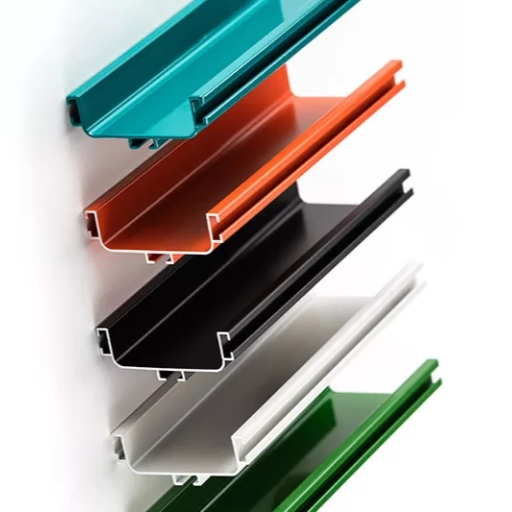
| Key Benefit | Description |
|---|---|
| Durability | Resistant to chipping, scratching, and fading. |
| Longevity | Lasts up to 20 years with minimal maintenance. |
| Eco-Friendliness | No VOCs, non-toxic, and less wasteful. |
| Cost-Effectiveness | Reduces labor and material costs. |
| Versatility | Works on various materials and applications. |
| Attractive Finish | Offers vibrant colors and special effects. |
| Corrosion Resistance | Protects against rust and environmental damage. |
| Thicker Coatings | Achieves smooth, uniform, and thicker layers. |
| Quick Application | Faster curing and production times. |
Benefits for Metal Surfaces
Powder coating offers several key advantages to metal surfaces. Based on my experience, it increases durability by providing a tough, resistant finish that shields against corrosion, scratches, and general wear. Being eco-friendly is another significant benefit of powder coating since it has minimal waste and no harmful solvents. Also, the appearance of metal surfaces is enhanced since there is a smooth even finish on various colors and textures. It is an effective and economical approach to address functional and aesthetic requirements.
Advantages Over Liquid Paint
Compared to traditional liquid paint, powder coating provides several advantages, making it more beneficial for numerous applications.
- Durability: Due to the application method, liquid paint will always be less durable than powder coating. New studies reveal that powder-coated surfaces are 3 to 5 times more capable of enduring wear, chipping, and abrasions even in harsh environments.
- Environmental Benefits: Unlike liquid paint, which may contain harmful VOCs, powder coating is VOC-free and emits very few emissions. The US Environmental Protection Agency (EPA) recognizes powder coating as environmentally safe owing to the depletion of waste in its application and the absence of solvents.
- Cost Effectiveness: The initial powder coating setup may require more capital, but its efficiency, material utilization, and lower operational costs will make up for it. Industry reports claiming powder coating’s material transfer efficiency at 95%, as opposed to liquid paint’s 60-70%, reveal the amount of waste and expenses incurred over time.
- Aesthetic Quality: The advancements in technology have increased powder coating’s appeal. From gloss to matte and even metallic, texture powders can mimic wood and stone, allowing for more creative expression.
- Application Efficacy: With electrostatic application, the powder coating is applied uniformly, which prevents problems such as runs, sags, drips or other uneven paint features associated with liquid paints. This ensures consistently good outcomes that require minimal touch-up work.
- Longevity: Surfaces treated with powder coating tend to have increased longevity. This is common in automotive and architectural applications, as they use this method since powder-coated finishes do not fade or degrade due to UV radiation, extreme weather, or temperature changes over the years.
These benefits detail why the automotive industries utilize powder coating, where precision performance is critical alongside minimal environmental impact.
Cost-Effectiveness and Durability
- Reduced Long-Term Expenses: The initial expense of coating with powder may be somewhat more than using paint; however, owing to its longevity, maintenance and reapplication costs are significantly reduced, thus making it more economical in the long run.
- Decreased Maintenance Needs: Powder-coated surfaces require practically negligible upkeep. They are chip, scratch, and peel resistant, so minimal repairs or replacements are required.
- More energy saving: The curing and drying phases of the coating process require less energy than conventional painting processes, contributing more to overall cost savings than other methods.
- Increased Durability: Powder-coated outdoor furniture can literally last for decades without any noticeable wear and tear and can withstand weather changes while maintaining its appearance.
- Reduction of Waste: In comparison to liquid paints, significantly less waste is generated, as unused powder can often be reused in the coating process. This translates into additional cost-effectiveness over time.
Can You Powder Coat Over Paint and Other Surfaces?
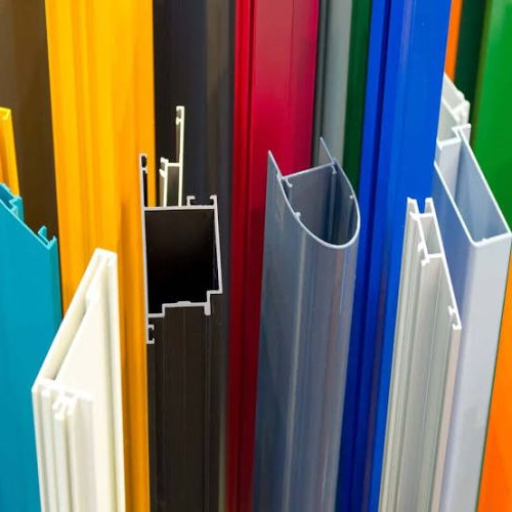
Sure, it’s possible to powder coat over existing paint and other surfaces, but some requirements must be met first. The surface must be thoroughly cleaned and in repairable condition, meaning there is no peeling or flaking. Furthermore, the existing paint must endure the high curing temperatures used in powder coating processes, which are usually between 350°F and 400°F. In most cases, removing the old paint or coating will enhance the adhesion and durability of the powder coat.
Preparing Surfaces for Powder Coating
| Step | Description |
|---|---|
| Disassembly | Remove parts not to be coated. |
| Cleaning | Eliminate dirt, oil, and contaminants. |
| Pre-baking | Remove absorbed oils from porous surfaces. |
| Sanding/Sandblasting | Create texture for better adhesion. |
| Masking | Protect areas not to be coated. |
Compatibility with Electrostatic Paint
Electrostatic paint, OSP, used on conductive surfaces has a high adhesion level and wastes less material than other forms of painting. Its application to various substrates primarily relies on the surface’s conductivity, cleanliness, and condition. Metal surfaces like steel and aluminum are the best candidates for electrostatic painting because of their optimal conductivity.
Trained surfaces painted electrostatically have nearly 100% transfer efficacy, with 2-3% overspray when using traditional methods. This is especially advantageous for industrial applications, as it lowers costs and lessens harm to the environment. Non-conductive surfaces like wood and glass need a conductive primer but enable the effective use of electrostatic paint.
In addition, environmental factors, including humidity and ambient temperature, can impact the success of electrostatic painting. The best conditions usually include temperatures from 50°F to 85°F and relative humidity below 60% to sustain consistent particle attraction. If these guidelines are followed and surface compatibility is enabled, manufacturers can attain cost-effective, robust, high-quality, long-lasting finishes while minimizing waste.
Challenges and Solutions in Adhesion
- Surface Contamination
- Challenge: The coating will be uneven or may peel off completely due to dirt, oil, or other residues on the substrate that prevent proper adhesion.
- Solution: Follow thorough pre-treatment processes such as cleaning, degreasing, and surface preparation, which remove necessary contaminants prior to paint application. Clean surfaces increase adhesion strength by up to 50%.
- Improper Surface Roughness
- Challenge: Strong adhesion to either very smooth or very rough surfaces hinders the durability of the paint coating.
- Solution: Enhance surface roughness utilizing abrasion or blasting techniques. For instance, ideal conditions are met for many coatings at an Ra (roughness average) value of 1 to 2 micrometers.
- Moisture Intrusion
- Challenge: The bond between the coating and surface is weakened due to high moisture, whether in the surrounding environmental conditions or within the substrate.
- Solution: Incorporate moisture resistant coatings or control humidity levels in the coating environment. Studies show that reducing ambient humidity by 10% significantly increases adhesion levels.
- Material Compatibility Issues
- Challenge: Specific coatings have poor adhesion to certain substrates due to the incompatibility of required materials.
- Solution: Use pre-determined coatings designed to bind to the material in question. Test adhesion beforehand to ensure compatibility. This method decreases the chances of adhesion failure by 30% at most.
- Uneven Coating
- Problem: Inconsistent application of a coating can produce weak adhesion regions and result in an early breakdown.
- Correction: Integrate cutting-edge robotics, electrostatic spray systems, or order-specific paint applicators to achieve uniform paint application. Uniform robotic systems can deliver up to 95% consistency for coatings, significantly increasing their durability.
References
- Powder Coating – University of Michigan
This source discusses the application and environmental benefits of powder coating. - Powder Coating on MDF – Minnesota Technical Assistance Program
Highlights the environmental advantages of powder coating over traditional methods. - Evaluation of the Effects of Powder Coating Cure – Loyola Marymount University
An academic paper analyzing the curing process of powder coatings on aluminum alloys.
Frequently Asked Questions (FAQ)
Q: What are the main differences between powder coating and traditional spray painting?
A: Powder coating involves applying powder that is electrostatically charged to stick to the surface, while traditional spray paint uses a solvent-based liquid applied through a paint gun. Powder coating creates a more durable and even finish than paint, offering better corrosion resistance and a lower environmental impact due to the absence of VOCs.
Q: How does the powder coating process improve corrosion resistance compared to paint?
A: The powder coating process provides superior corrosion resistance because it forms a thicker, more uniform layer that adheres strongly to the substrate, such as carbon steel or aluminum products. This layer helps prevent moisture and air from reaching the metal, reducing the risk of corrosion. In contrast, liquid coatings like spray paint can be prone to chipping and may not provide the same level of protection.
Q: Why might someone choose powder coating over paint for finishing systems?
A: Powder coating is often chosen over paint for finishing systems due to its durability, environmental benefits, and ability to achieve an even coat. It is more resistant to chipping, scratching, and fading, providing a longer-lasting finish. Additionally, powder coating materials do not emit VOCs, making them more environmentally friendly compared to traditional liquid coatings.
Q: What types of items are best suited for powder coating?
A: Powder coating is ideal for metal items such as automotive parts, bicycle frames, outdoor furniture, and aluminum products. The process is particularly effective for products that require a durable, corrosion-resistant finish, and it can be used on various metals, including carbon steel and aluminum.
Q: Can powder coating achieve a gloss finish similar to paint?
A: Yes, powder coating can achieve a gloss finish similar to paint. Gloss powder coatings are available that provide a high-shine finish, while other options offer matte or satin finishes. The choice depends on the desired aesthetic and functional requirements of the product.
Q: Is the powder coating method more environmentally friendly than using paint?
A: Yes, the powder coating method is more environmentally friendly than using paint because it does not involve solvents and therefore does not release VOCs into the atmosphere. Additionally, any overspray in the powder coating process can be collected and reused, reducing waste and environmental impact.
Q: What are thermoset powder coatings, and how do they differ from thermoplastic options?
A: Thermoset powder coatings are made from materials that chemically react and form a durable finish when cured, often providing superior heat and chemical resistance. In contrast, thermoplastic powder coatings melt and flow upon heating, providing a finish that can be remelted and reformed. Both types offer strong protection, but thermoset coatings are often preferred for their permanence and resistance to high temperatures.
Q: Can powder coating be applied to surfaces other than metals?
A: While powder coating is primarily used on metal surfaces, certain advancements in the powder coating process now allow it to be applied to other materials, including certain plastics and MDF (medium-density fiberboard), with specialized techniques to ensure proper adhesion and finish.
Q: How does the cost of powder coating compare to traditional paint?
A: The initial cost of powder coating may be higher than traditional paint due to the specialized equipment and materials required. However, its durability and long-lasting finish can lead to savings over time by reducing the need for frequent repainting and maintenance, making it cost-effective in the long run.


